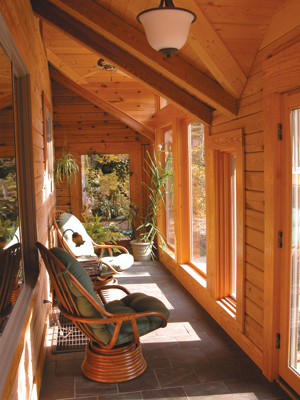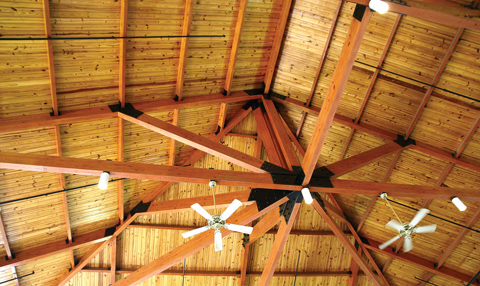Collect heat from the sun through windows. Ideally, windows should face within 30 degrees of due south.
Absorb that heat with a storage element such as a masonry wall, a stone floor, or a water container that sits in the direct path of the sunlight.
Store the heat you’ve soaked up within that wall, floor, or container. The right materials will do that naturally.
Distribute heat from the storage element to different areas of the house via conduction (the way heat moves through materials), convection (the way heat moves through water or air), or radiation (the way heat moves from warmer objects to cooler ones) as the temperature goes down.
Control heat with roof overhangs, fans, window coverings, and ventilation on hot summer days.
ALREADY OWN A LOG HOME?
These tips will help balance the passive solar effects on your already-built log home.
• Consider installing stone floors to help absorb the sun’s heat and keep your home warmer throughout the winter.
• Reduce trees and other landscape elements that block the sunlight in the winter. Deciduous trees are ideal because they provide shade in the summer but let that crucial light in once they shed their leaves.

Enertia Building Systems, Inc.
• Add overhangs or awnings to reduce the amount of light you let in during the summer.
• Window coverings and ceiling fans are a low-cost way to keep your air-conditioning bills down as well.
• Up your insulation to reduce air infiltration. Check seals around doors and windows, seal ducts into attics and crawl spaces, and install dampers or glass doors on fireplaces.

